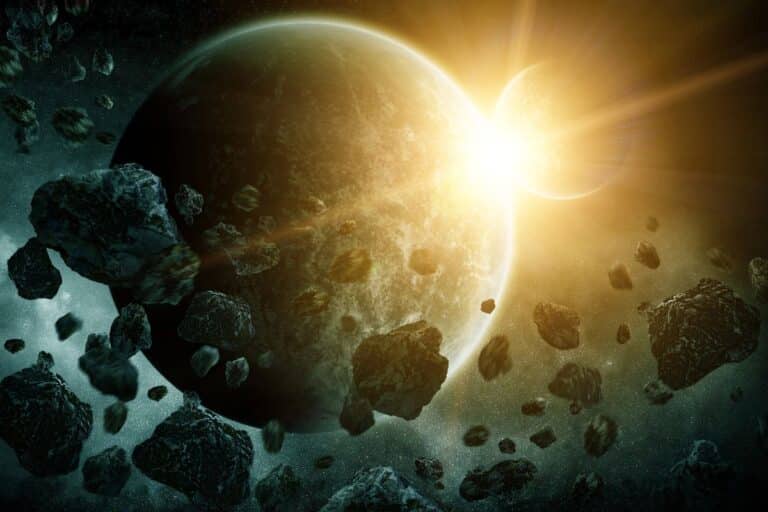
A hidden swarm of ‘city-killer’ asteroids around Venus could one day collide with Earth, simulations suggest.
How did your country report this? Share your view in the comments.
Diverging Reports Breakdown
A hidden swarm of ‘city-killer’ asteroids around Venus could one day collide with Earth, simulations suggest.
Venus may harbor hidden asteroids capable of devastating Earth upon impact. These “city killer” space rocks orbit the sun alongside Venus but remain largely undetected. Computer simulations indicate these hidden asteroids could eventually cross Earth’s path. The study enriches our understanding of near-Earth objects and strengthens planetary defense capabilities for generations to come. The Vera C. Rubin Observatory in Chile, expected to begin operations later this year, will significantly enhance our ability to identify potentially hazardous objects, such as Venus co-orbital asteroids.. Some researchers propose sending a dedicated telescope to Venus’ orbit specifically to hunt for these hidden threats. This approach would complement existing detection methods that have already proven valuable in studying celestial objects like meteorites providing insights into Mars’ ancient hydrothermal systems.
Venus co-orbital asteroids: an emerging cosmic concern
Scientists have identified approximately 20 co-orbital asteroids around Venus, all measuring over 460 feet (140 meters) in diameter—large enough to devastate metropolitan areas upon impact. These space rocks follow Venus in its solar orbit without actually circling the planet itself.
The known Venusian asteroids include Trojan asteroids, which maintain fixed positions either ahead of or behind Venus, and a unique “quasimoon” called Zoozve. Most originated from the main asteroid belt situated between Mars and Jupiter, similar to many potentially hazardous asteroids tracked by NASA.
While these space rocks currently pose no immediate threat, their orbits can shift over time. When Venus approaches Earth—coming within approximately 25 million miles at its closest—its gravitational influence on these asteroids changes. This proximity makes Venus our closest planetary neighbor and potentially increases the risk from its asteroid companions.
The hidden threat behind the sun’s glare
Researchers believe many more Venusian co-orbitals remain undiscovered. The current detection bias favors asteroids with high eccentricity (elongated orbits), suggesting numerous objects with more circular paths around Venus likely exist but remain hidden by the sun’s brightness.
This observational challenge creates significant knowledge gaps about potential threats. The situation parallels other mysterious space phenomena that scientists are working to understand, like those mysterious cosmic events revealed through subtle light variations that have expanded our astronomical understanding.
Computer simulations indicate these hidden asteroids could eventually cross Earth’s path. Approximately every 12,000 years, these co-orbitals undergo a positional shift—called a co-orbital cycle—potentially altering their trajectories in ways that might bring them dangerously close to our planet.
Long-term collision possibilities revealed by simulations
In a groundbreaking study published in May 2025, researchers created simulations to assess potential Earth impact scenarios over a 36,000-year timeframe. The team “cloned” known low-eccentricity co-orbitals and tracked their projected movements across three complete co-orbital cycles.
Lead researcher Valerio Carruba from São Paulo State University emphasizes that while some simulated objects could theoretically threaten Earth during this period, determining actual collision probability remains challenging. “How many exactly is an open question,” Carruba notes, referring to the total population of Venus co-orbitals.
The study provides vital perspective on cosmic threats, complementing other astronomical research like studies tracking massive black holes approaching our cosmic neighborhood and efforts to locate the hypothesized ninth planet in our solar system.
Future detection capabilities and protective measures
Despite sensationalist headlines suggesting imminent impacts, Carruba clarifies: “None of the current co-orbital objects will impact Earth soon.” However, he emphasizes the importance of monitoring these “exciting” asteroids more carefully.
The asteroid detection landscape is rapidly evolving. The Vera C. Rubin Observatory in Chile, expected to begin operations later this year, will significantly enhance our ability to identify potentially hazardous objects, including Venus co-orbitals.
Some researchers propose sending a dedicated telescope to Venus’ orbit specifically to hunt for these hidden threats. This approach would complement existing detection methods that have already proven valuable in studying celestial objects like meteorites providing insights into Mars’ ancient hydrothermal systems.
While Venus’ hidden asteroids represent a theoretical future threat rather than an immediate danger, their study enriches our understanding of near-Earth objects and strengthens planetary defense capabilities for generations to come.
